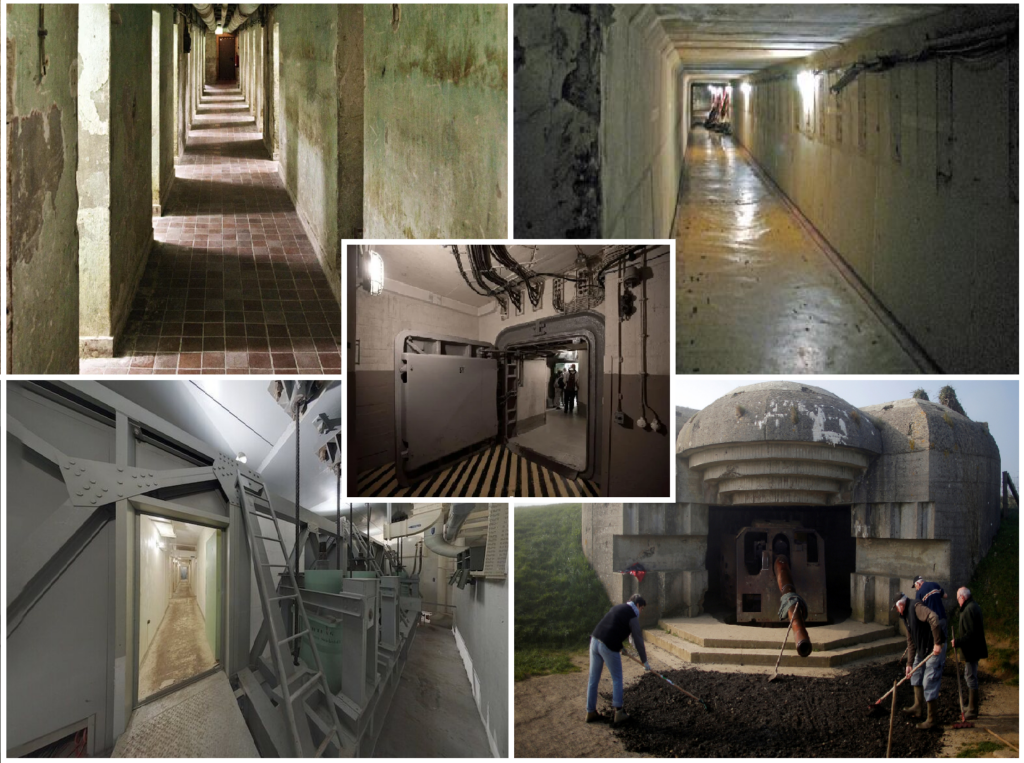
- Germany currently aims to improve its existing bunker facilities and also increase the number of bunkers built.
- Russia’s 2022 invasion of Ukraine has destroyed the belief that many European countries held, that there would be no more wars in Europe after World the II.
- Germany’s bunker expansion symbolises a deeper psychological shift in European strategic defence thinking.
Germany recently announced that it is planning to revitalise its bunker infrastructure due to the possible threat of a conflict, specifically with Russia. The country’s current status on the number of bunkers is significantly lower than what they used to be during the Cold War. This leaves a large proportion of Germany’s population under threat in case an attack happens. Germany currently aims to improve its existing bunker facilities and also increase the number of bunkers built. They also plan to build tunnels, metro stations, and other underground spaces that are safe for people to take shelter in.
Russia’s 2022 invasion of Ukraine has destroyed the belief that many European countries held, that there would be no more wars in Europe after World the II. Many Eastern European countries like Poland and countries in the Baltic have already started improving their military infrastructure, in fear of war escalation. Even NATO has started preparations by including hybrid warfare, civil defence, and population preparedness in its key agenda.
Germany has long been committed to pacifism, but due to recent geopolitical tensions, it is reassessing its defence strategy and infrastructure. Even the people of Germany are scared, in case of war escalation or spillover to other parts of Europe. NATO has also asked its member states to strengthen their military and defence capabilities. The Bundeswehr’s limitations came to light post the Russia-Ukraine war, and this has pushed Germany to rethink its military strategy. German media reports that the country’s armed forces are highly under-funded, have ancient equipment, logistical weaknesses, and personnel shortages. Experts believe that these issues need to be tended to at the earliest, especially in today’s world with fears of escalation from the Russian side. Germany has also been overdependent on NATO partners for its defence equipment. Hence, there is a need for Germany to restore its credibility within NATO as a trustworthy defence actor.
Several other NATO members, especially those in the Eastern Europe, like Poland, Finland, and other Baltic states are also focusing on revamping their defence infrastructure. Many other countries like Estonia, Latvia, and Lithuania have already raised their defence mechanisms to Cold War-era levels. They have also conducted a public drill to train civilians in case a war-like scenario breaks out. The bunker plan of Germany has a potential of fuelling momentum for deeper EU cooperation. This planning alert sends a message to Russia of a unified and prepared NATO.
Germany’s bunker expansion symbolises a deeper psychological shift in European strategic defence thinking. These preparedness plans indicate that Europe has lost faith in long-term peace, which it once maintained. This has pushed the European countries to be self-reliant in defence technologies, and work on defence measure to ensure safety of their people in case of a war. Civilian preparedness, which has long been sidelined, is again becoming an important pillar of the national security policy. These actions mark that Europe is once again turning towards “Fortress Europe”, signifying how the continent is turning inwards, and prioritizing its security over openness.
References:
- https://www.theguardiaprioritising2025/jun/07/germany-plans-rapid-bunker-expansion-amid-fears-of-russian-attack
- https://www.rt.com/news/618819-germany-bunkers-militarization-plans/
- https://apnews.com/article/norway-russia-europe-preparedness-total-defense-arctic-3deb846985c54fa33932c4e87a421394
- https://www.reuters.com/world/europe/switzerland-plans-revamp-cold-war-era-nuclear-bunker-network-2024-12-13/
- https://foreignpolicy.com/2022/05/08/europe-public-bunkers-nuclear-war-russia-ukraine-civil-defense/
Archita Gaur is a postgraduate student at the School of International Studies, JNU. She specialises in the World Economy and has a strong interest in public policy, economic research, and governance. The views expressed are the author’s own.
